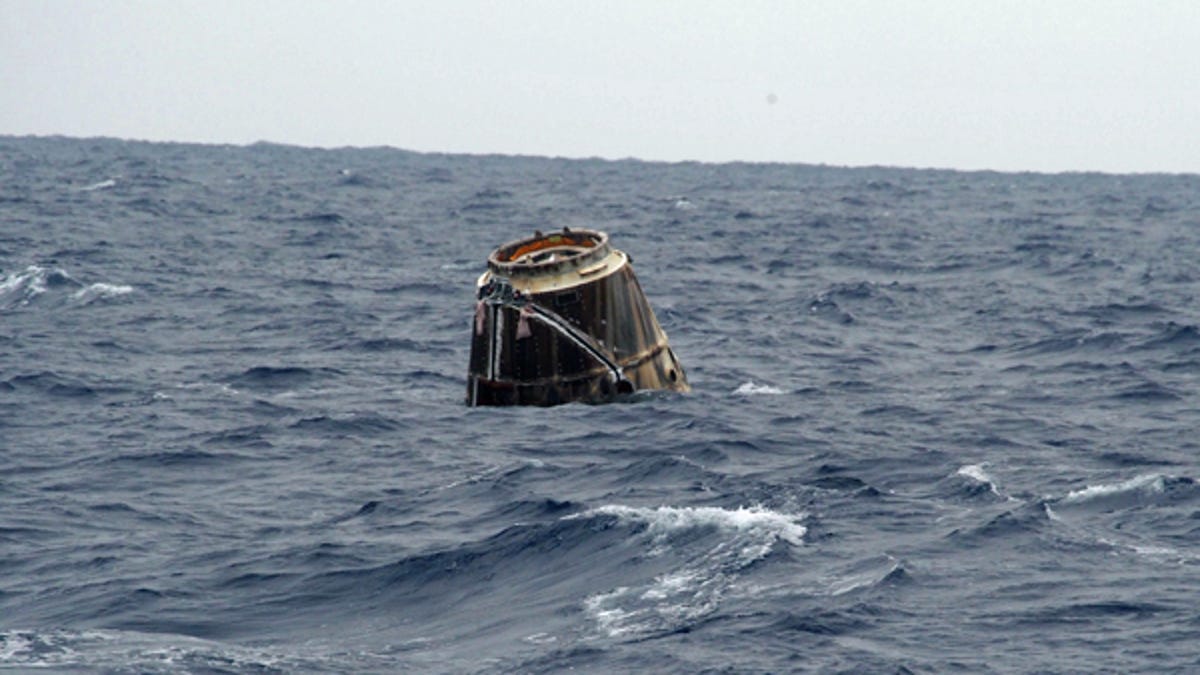SpaceX Dragon's second splashdown is a historic first
No space cargo capsule has ever made two trips from Earth to the International Space Station and back. Until now.

A SpaceX Dragon cargo ship after an on-target re-entry and splashdown.
On Monday morning, a SpaceX Dragon capsule became the first spacecraft of its kind to return to Earth from space for a second time. The robotic Dragon's mission was a fairly routine cargo ferrying assignment to and from the International Space Station, but making the relatively mundane trip twice is historic.
Until now, no single cargo capsule has visited the ISS and returned to Earth more than once. In fact, all other non-SpaceX vehicles that visit the space station are designed to burn up in the atmosphere after a single flight. SpaceX has been recovering its Dragon capsules via splashdowns in the ocean, but this is the first time that one of those recycled craft has completed a second re-supply mission.
SpaceX's iconoclastic CEO Elon Musk has spent the past 15 years building the business around the idea of making space vehicles reusable. In addition to reusing an ISS cargo craft for the first time, the company has also begun to recycle its Falcon 9 rockets in the past year.
The veteran Dragon capsule splashed down in the Pacific Ocean shortly after 5:10 a.m. PT Monday. The craft is loaded with samples, gear and other parts of various scientific experiments performed on the ISS that will now be further analyzed on Earth.
Good splashdown of Dragon confirmed—completing first re-flight of a commercial spacecraft to and from the @Space_Station.
— SpaceX (@SpaceX) July 3, 2017
Shortly after the Dragon departed the International Space Station late Sunday night, astronaut Jack Fischer praised the craft through radio communications with NASA mission control in Houston.
"I could even say it was slathered in awesome sauce. This baby has had almost no problems, which is an incredible feat considering it's the first reuse of a Dragon vehicle," Fischer said. "And the science we've done -- oh my, the science. Most of the 6,000 pounds of cargo carried was science, and almost all the return cargo are precious samples for discoveries we can't wait to see."
Those samples include tissue from rodents sent to the ISS for a number of experiments. One of these experiments will gauge the effectiveness of a drug that could be used to treat osteoporosis.
First published on July 3 at 6:56 a.m. PT.
Updated at 11:02 a.m. PT: to clarify that Dragon was the first cargo capsule, not spacecraft, to make two trips to the space station. NASA's space shuttle also made multiple visits.
Technically Literate: Original works of short fiction with unique perspectives on tech, exclusively on CNET.
Crowd Control: A crowdsourced science fiction novel written by CNET readers.

